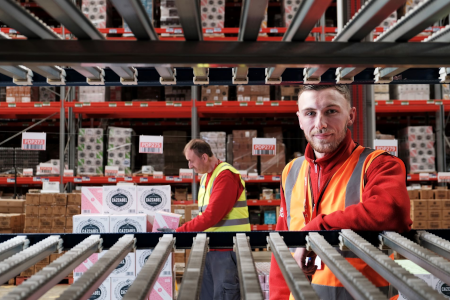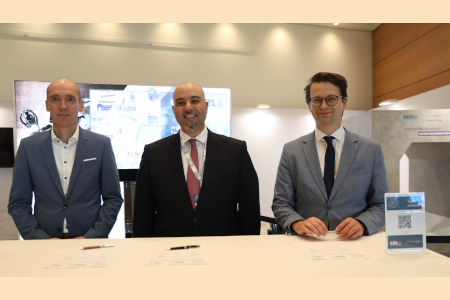Bryn Heimbeck, President and Co-Founder of Trade Tech, explains the importance of adapting services to meet the evolving needs of stakeholders and help them navigate today’s complex supply chain
Do you think the Ports of LA and Long Beach prepared for the surge in volume from rerouted cargo, given existing infrastructure limitations?
It’s worth noting that what may appear to be a surge is actually a steady volume increase that is here to stay for the foreseeable future. Data shows that despite currently being in the slack season (October to March), cargo volumes are already high, which will impact congestion in the Los Angeles/Long Beach port complex.
Despite the Ports of LA and Long Beach’s dedication to investing in infrastructure improvements, the process of executing these changes takes years. Consequently, there has been limited infrastructure updates made since COVID, which will result in port congestion and landside capacity challenges for the market in the short term.
Investing in off-dock developments by the Ports of Los Angeles and Long Beach is a positive step forward. However, it’s crucial to address the underlying processes to fully leverage these investments. Given the absence of significant infrastructure changes, focusing on process improvements is imperative.
Implementing a significant public relations campaign aimed at influencing the trade to adopt new processes is the first essential step. The goal should be to achieve an 85% port wide peel-off rate, which will enable terminals to handle the impending changes efficiently.
How do you foresee port congestion and capacity challenges impacting the market in the short term, especially with increasing volumes to Southern California ports?
One significant impact will be to shift vessel calls to the Pacific Northwest (PNW). Notably, Seattle boasts the only unoccupied container terminal on the US West Coast. Such a move would alleviate port congestion significantly.
How can the industry better prepare for short- and long-term disruptions, ensuring supply chain fluidity and resilience in the face of geopolitical and environmental challenges?
It is necessary to apply strategies that prioritize resilience by integrating sourcing and routing diversity with technology to better prepare for short and long-term disruptions in the supply chain. A technology-enabled and diverse supplier sourced supply chain can adapt and recover swiftly from disruptions, minimising their impact on operations and ensuring continuity in business processes.
Diversifying sourcing can mitigate the impact of disruptions. If challenges occur in one region, alternatives are readily available in another market. This may be easier for US importers compared to their European counterparts due to the wider range of sourcing options available.
Utilising multiple transportation routes–using different trade lanes, partnering with several ports, connecting with a variety of trucking and warehouse companies– can also reduce the effect of supply chain disruption. By avoiding reliance on single routes and expanding your supplier network, businesses can maintain continuity in their operations even when facing challenges such as port congestion, equipment dislocation, warehouse capacity or transportation delays.
Embracing technology to project control all the way to origin enhances visibility and optimises efficiency; both are important tools enabling sourcing diversity and alternative routes. Using a global logistics platform such as Trade Tech that offers the ability to project supply chain management throughout the world creates consistency in the SCM process, which yields the predictability that has been elusive thus far.
Even if being physically present in multiple countries is not feasible, technology can facilitate remote supervision, coaching, mentoring, and training to ensure smooth operations across the globe. If we were still working in a paper-based environment, we would be seeing far less volume than what we see today; it is technology that enabled the processing of more shipments.
How is Trade Tech adapting its services to meet the evolving needs of stakeholders in navigating today’s complex supply chain challenges?
Trade Tech is a globally available platform that offers a robust suite of solutions that address today’s supply chain challenges. With a mission to simplify the complexities of the supply chain, Trade Tech’s platform serves as a control tower that helps its customers navigate the ever-evolving landscape so their cargo keeps moving even during times of disruption.
Key features of Trade Tech’s platform include:
Data Standardisation: Trade Tech ensures that all parties involved in each shipment speak the same language by standardising data, including core reference data. This facilitates seamless communication and collaboration among stakeholders.
Process Controls: The platform incorporates process controls to enforce best practices and ensure that all parties follow correct procedures. This reduces the likelihood of errors and enhances efficiency throughout the supply chain.
Collaboration Tools: In addition to its multi-tenant/community platform that brings all the parties to one place, Trade Tech provides collaboration tools that enable teams to work together effectively regardless of their location. This fosters a single version of the truth and allows collaboration and coordination among global teams, enhancing overall productivity.
Integration with Stakeholders: One of the most crucial aspects of Trade Tech is its ability to integrate with various stakeholders involved in the supply chain, including providers, ocean carriers, customers, warehouses, truckers, terminals, and Customs agencies. By connecting data seamlessly across these entities, Trade Tech creates a digitally linked environment that enhances visibility, efficiency, and compliance.
What predictions do you have for the industry regarding ongoing crises and supply chain preparedness, and how can technology and innovation address these challenges effectively?
Current geopolitical issues may persist in the short term but won’t pose a significant problem in the mid-term. The fact that the Iranians need the Chinese to buy significant amounts of oil and the Houthis are cutting off China’s routes to Europe should be a factor in ending the turmoil. The future of the Panama Canal’s operations remains uncertain; the long-term impact of potential disruptions on global trade is difficult to predict.
Environmental and geopolitical issues have always impacted global trade and today is no different. Supply chain managers must develop work-arounds to ensure cargo gets to its destination. The ability to swiftly pivot is an essential part of effective supply chain management. This is where technology comes in. When it is time to change course, technology provides insight that helps guide decisions.
The U.S. economy is expected to continue performing well unless significant congestion issues impede growth. Congestion could act as a glass ceiling, limiting the economy’s potential. However, once the market recognises that addressing congestion improves reliability, rapid and widespread changes are anticipated. These changes are going to be quick and vast, not a slow uptick in certain markets.
Changes in port terminal operations are necessary to address congestion and improve the efficiency that is required to keep an ever-growing supply chain moving fluidly. This includes the establishment of port communities where standardised data transmission facilitates early Customs Clearance. Importers making early appointments for cargo removal and implementing peel-off stack processes will enhance terminal productivity and benefit drayage companies but may put a strain on warehouses.
What role does collaboration play in mitigating supply chain disruptions, and how can stakeholders enhance coordination and resilience?
Collaboration is the future. Collaboration makes every supply chain process easier. Once parties realise that the new way is better than the old, it will not take the parties long to switch.
When all stakeholders collaborate, it leads to smoother operations, improved efficiency, a more resilient supply chain and better outcomes for everyone involved. Collaboration improves communication, enhances visibility, optimises operations, enables faster problem resolution and increases innovation.
How can the industry foster long-term sustainability and resilience amidst evolving dynamics, and what areas require attention and investment?
Fostering long-term sustainability and resilience in the supply chain industry requires a combination of diversity, technology, collaborative platforms, innovation, and a willingness to embrace change. By investing in these areas, businesses can adapt to evolving dynamics and thrive in an increasingly interconnected global marketplace. Promoting a culture of continuous innovation and experimentation is key to evolving with the market and encouraging a sense of adventure is key to enjoying the ride.
How is Trade Tech leveraging technology and innovation to enhance supply chain efficiency?
For more than 25 years,Trade Tech has been offering a complete integrated supply chain management platform that enables collaboration with all stakeholders around the world. The Trade Tech platform has opened a new paradigm, putting in place solutions that address longstanding challenges that have plagued the industry.
Growth comes by making administration of the supply chain easy. Trade Tech’s mission is to simplify the complexities of the supply chain with a platform that leverages collaboration and connection, enabling streamlined processes, improved efficiencies and enhanced visibility.
Read more news and exclusive features in our latest issue here.
Never miss a story… Follow us on:
International Trade Magazine
@itm_magazine
@intrademagazine
Media Contact
Joseph Clarke
Editor, International Trade Magazine
Tel: +44 (0) 1622 823 920
Email: editor@intrademagazine.com







